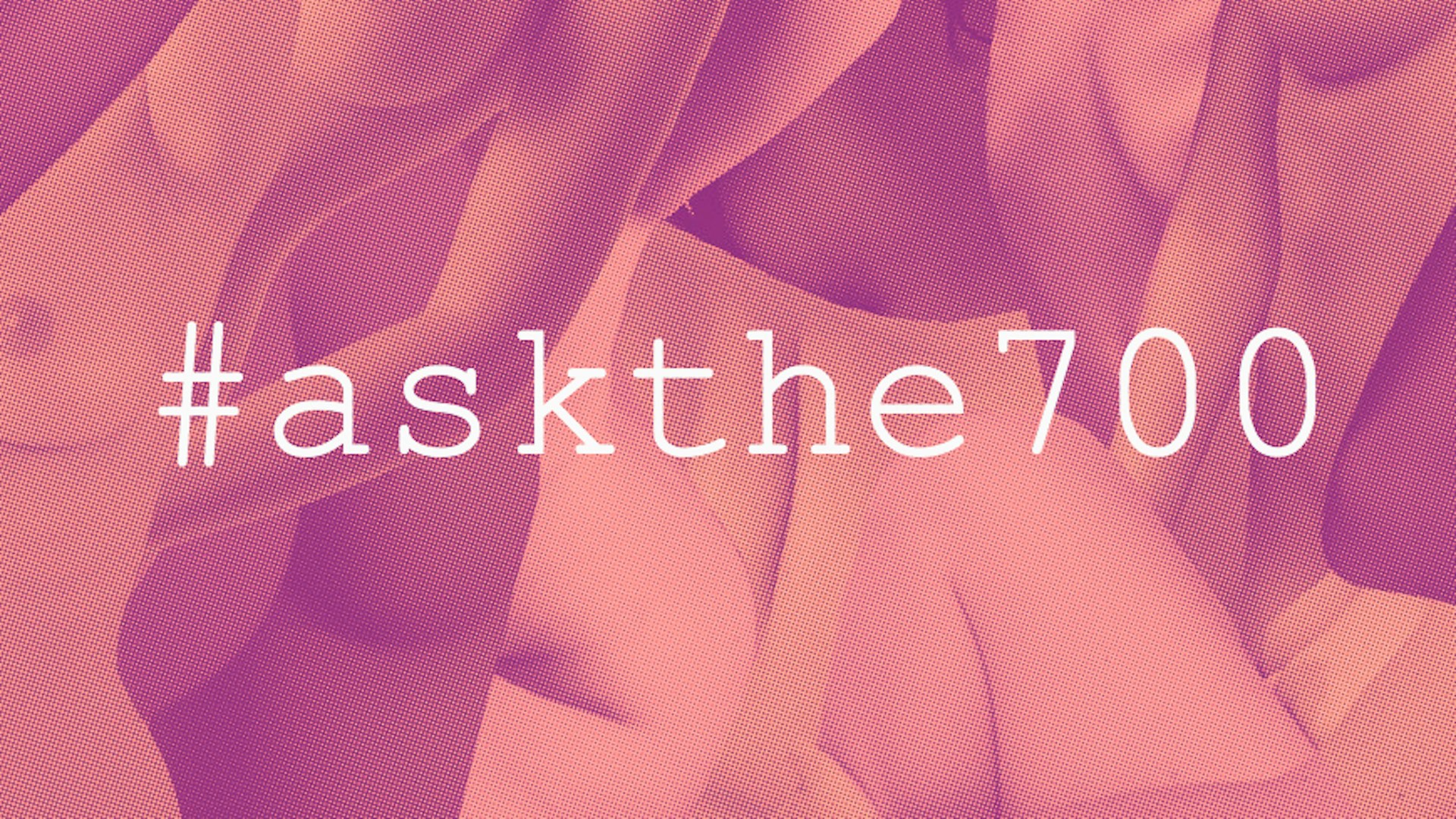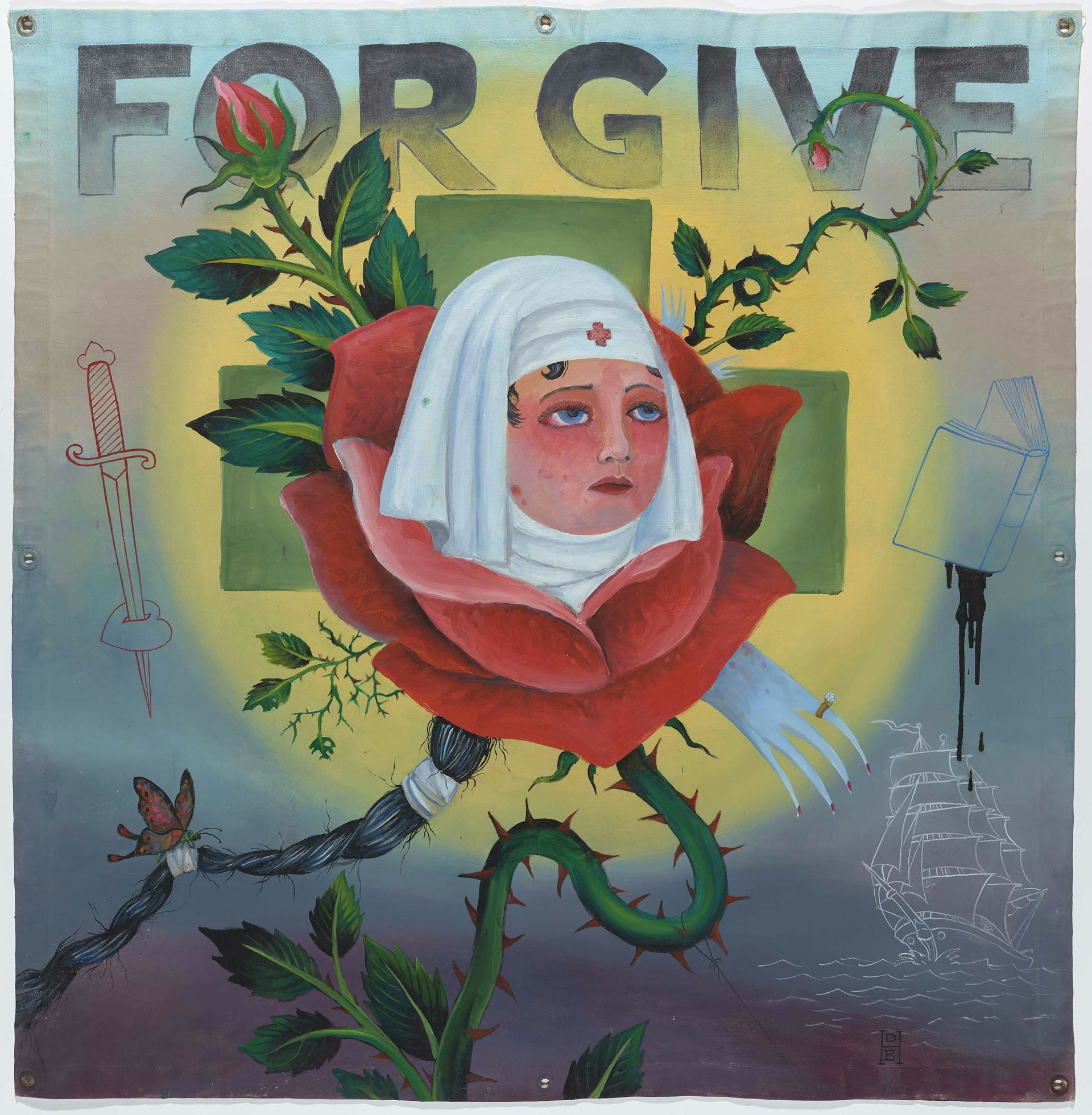
Tattoo legend Ed Hardy reflects on a life in ink
- Text by Miss Rosen
- Photography by Ed Hardy
“I had no idea it would get to this point,” says tattooist Ed Hardy, reflecting on his first museum retrospective, Deeper than Skin.
The native Southern Californian remembers the moment the obsession took hold at the age of 10. “My best friend’s dad had a bunch of tattoos from his Navy career, so I got hooked,” he remembers. “I thought it was the greatest art form. The only thing I was ever good at was drawing and I thought, if I could figure out a way to draw that it would be great – so it worked.”
As a printmaking student at the San Francisco Art Institute in the 1960s, Hardy studied the works of artists such as Dürer, Rembrandt, and Goya at the Legion of Honor’s Achenbach Foundation for the Graphic Arts. Then, in 1966, while getting one of his first tattoos from Phil Sparrow in Oakland, he was introduced to the art of Japanese tattooing – and the pieces of the puzzle snapped into place.
Hardy rejected a graduate fellowship from Yale to apprentice with tattoo artists up and down the West Coast, before opening his first studio in 1968. At that time, tattoos were strictly an outsider art, relegated to the realms of sailors and motorcycle-gang members. Over the next half-century, Hardy and his compatriots helped take tattoos mainstream, giving them the respect they rightfully deserved.
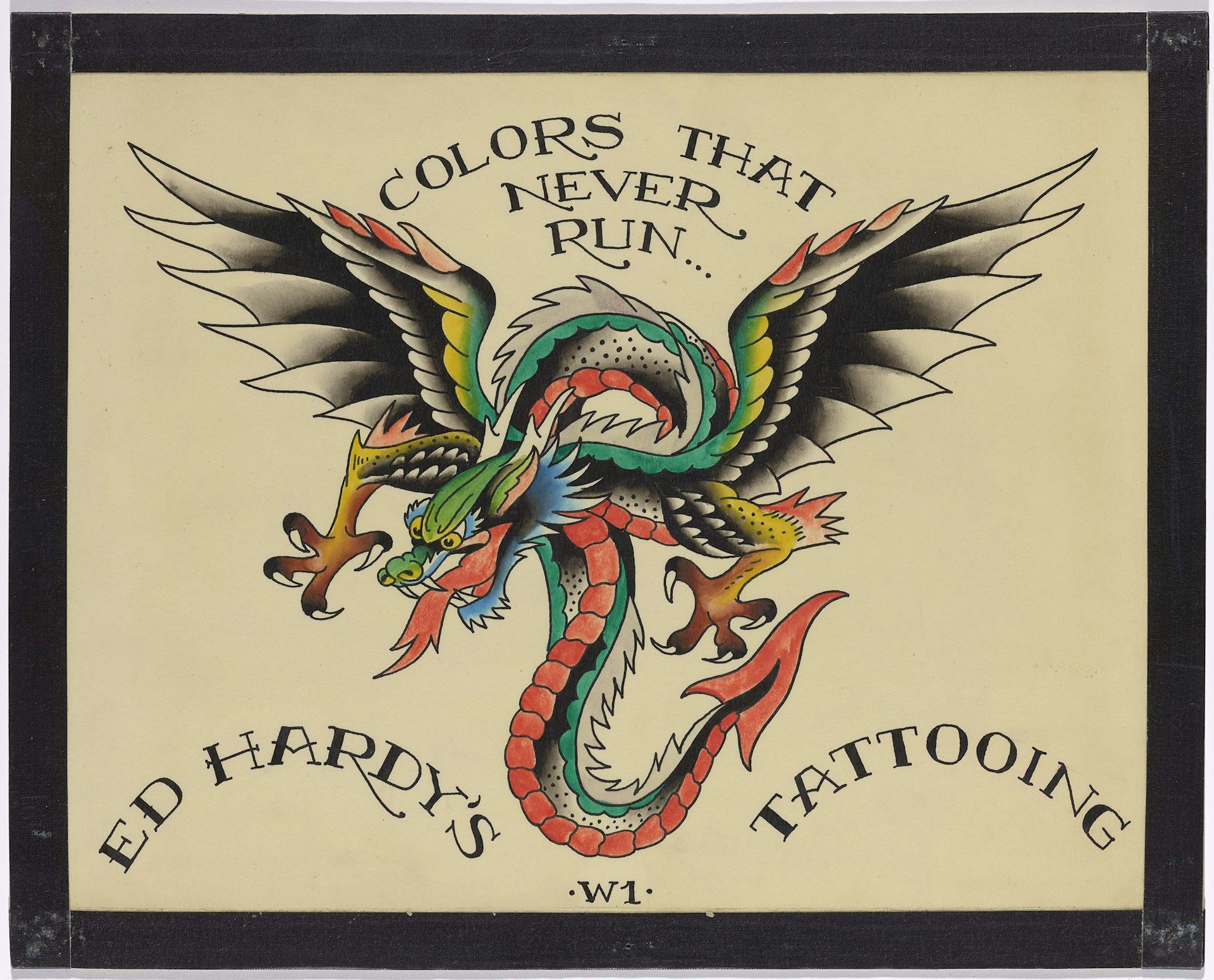
Colors that Never Run, W1, n.d
“I always resented the fact that people were judged by tattoos,” he says. “It’s nobody’s business if you want a tattoo. I never intended to proselytize them; I just thought they had great potential as an expressive art form — and because they’re transient and they’re on a person, they’re no bankable art form. A tattoo is going to die with you, and it’s fine.”
“Tattoos are a way to celebrate being alive and express things that have been meaningful in our journey. Even if you don’t show the tattoo to anyone else, they are memory devices. It’s a personal thing that is ingrained in us as a species. A lot of societies use it as a positive form.”
Hardy’s love for tattoos runs through his blood, giving him the perfect canvas upon which to perfect his art. Deeper than Skin presents more than 300 objects dating back to his youth, which reveal his revolutionary spirit. The exhibition catalogue brilliantly contextualises his career, revealing the diverse influences that helped him to create a visual language that transformed tattoo art in every conceivable dimension.
“It’s been a great life – really amazing,” Hardy says. “If you have a talent or a drive to want to express yourself with art, if you can figure out a way to make it happen and make it be part of your life, it definitely enriches your existence. If you don’t have to bury that, keep up your personal art because it’s a way to cope with all the stress of being alive these days.”
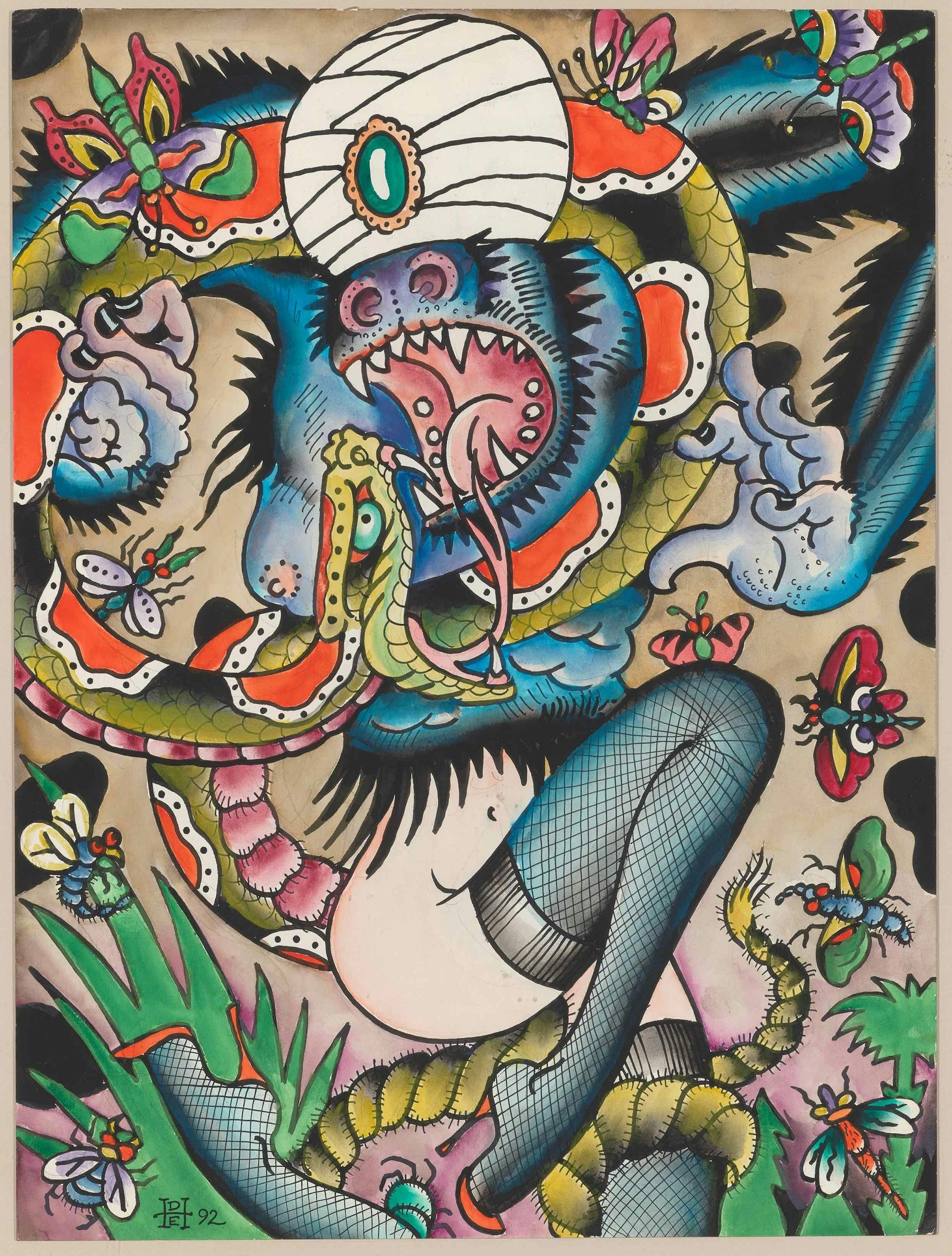
Climber, 2011. FINE ARTS MUSEUMS OF SAN FRANCISCO, GIFT OF THE ARTIST, 2017.46.141

Virile Music, 1992.
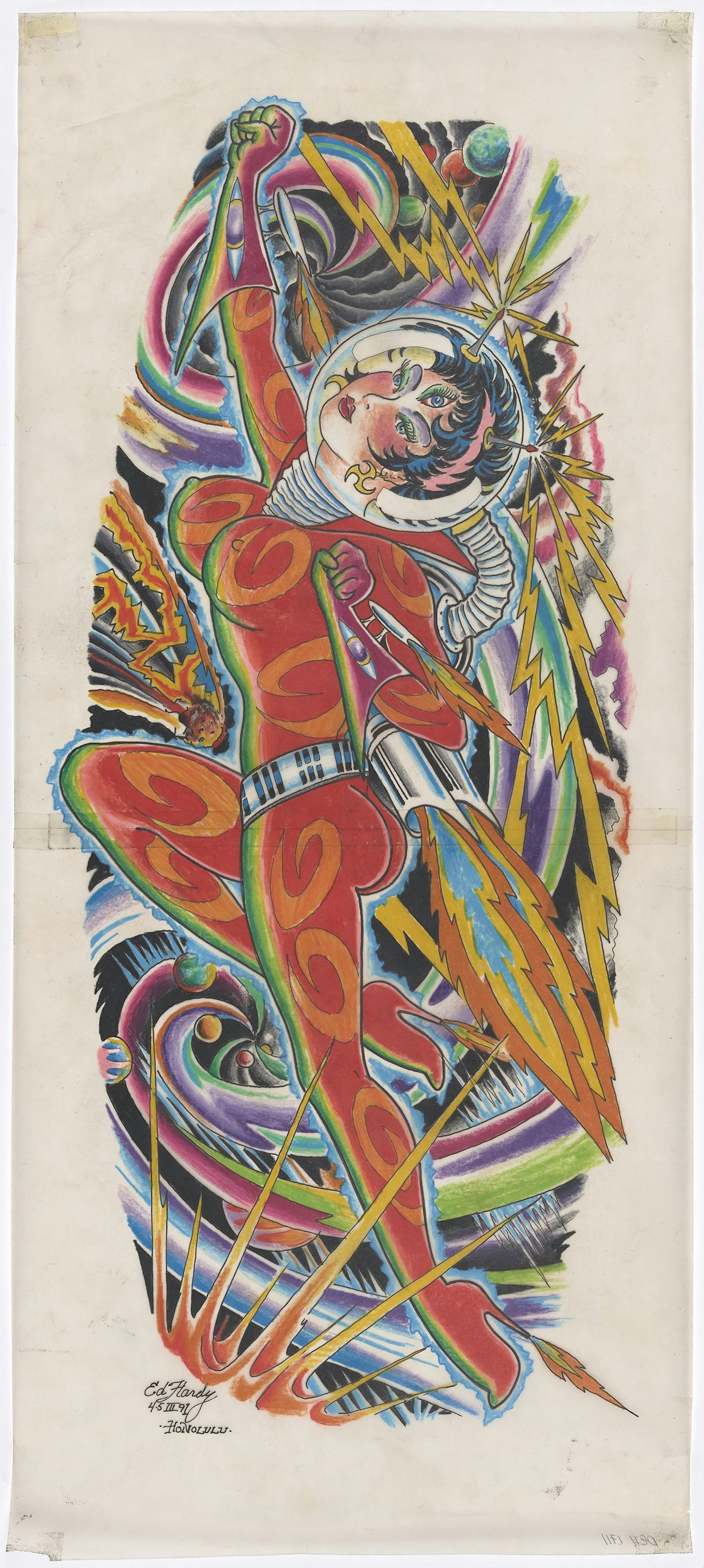
Rocket Girl (tattoo design for rib), 1991
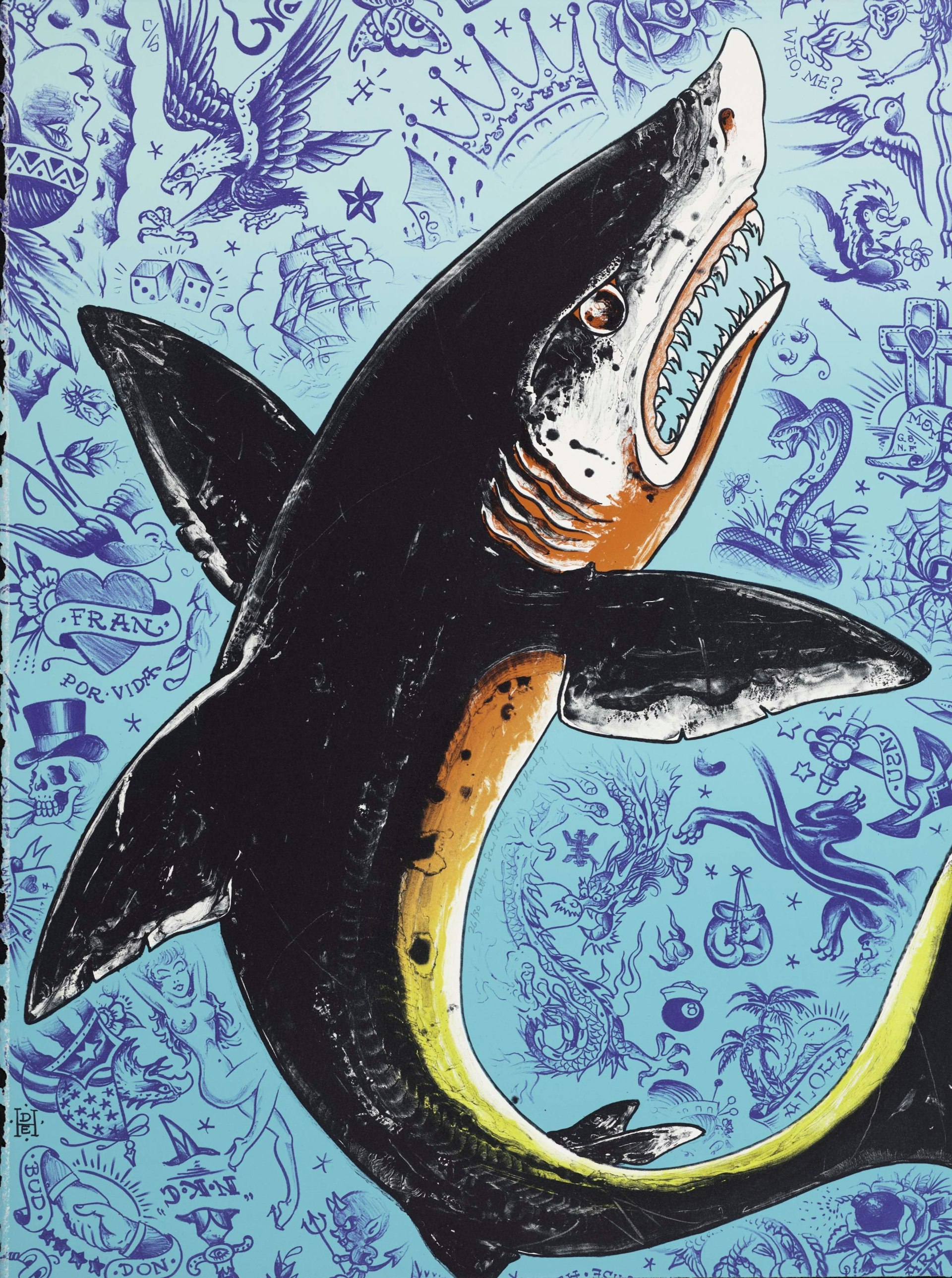
DON ED HARDY. Tattoo Seas Shark, 1995. Printed by Bud Shark FINE ARTS MUSEUMS OF SAN FRANCISCO, GIFT OF THE ARTIST, 2017.46.12
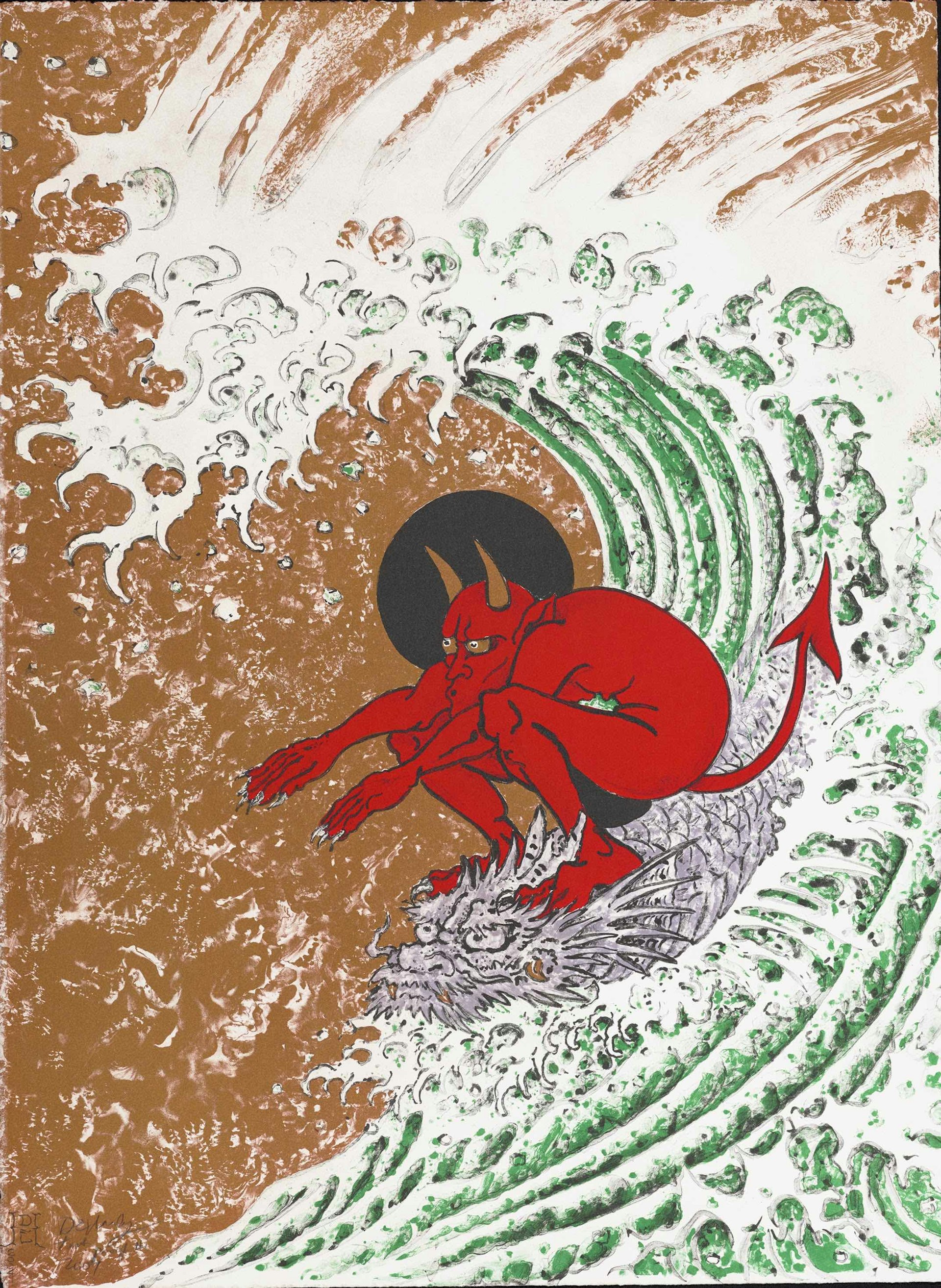
Surf or Die, 2004. FINE ARTS MUSEUMS OF SAN FRANCISCO, GIFT OF THE ARTIST, 2017.46.132

El Tigre, 2009.
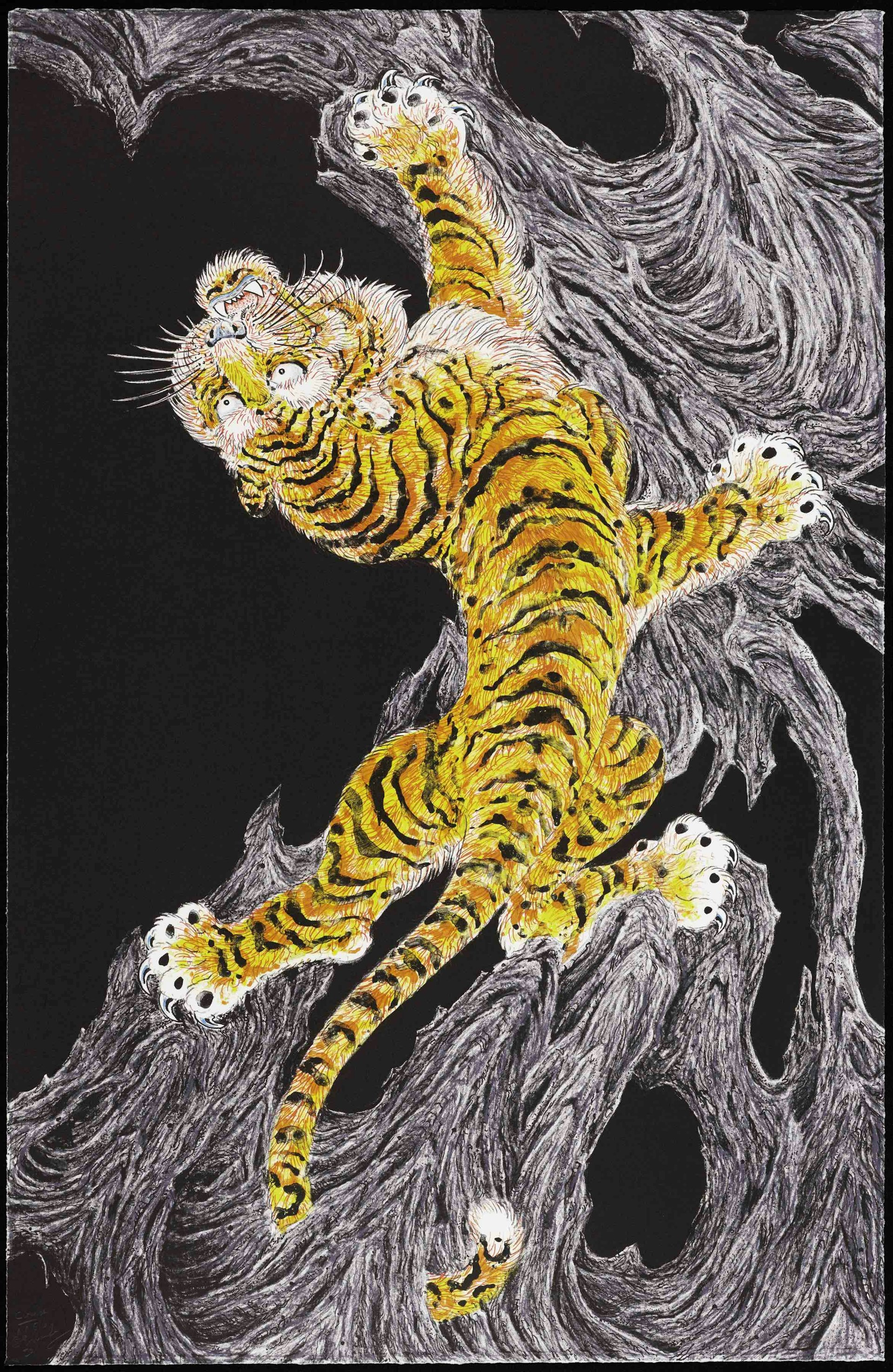
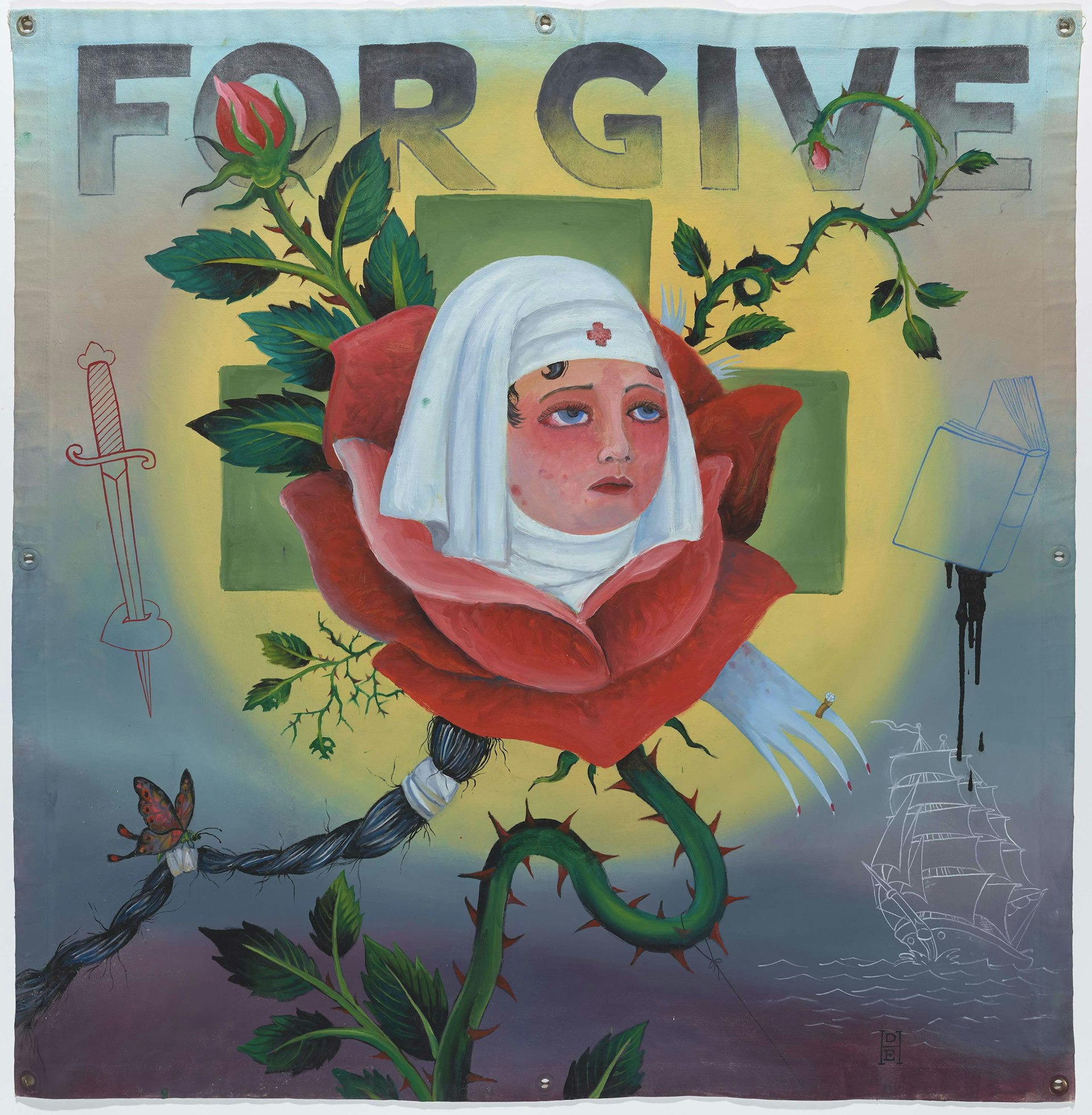
Forgive, 1995.
Ed Hardy: Deeper than Skin is on view at the de Young Museum in San Francisco through October 6, 2019.
Follow Miss Rosen on Twitter.
Enjoyed this article? Like Huck on Facebook or follow us on Twitter.
